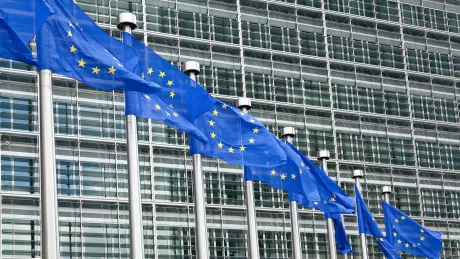
The electronic seal will turbocharge digitalization
published on 15.03.2019
What is the electronic seal? Who needs this new tool and what is it used for? What will it make easier? In this article, we answer the most important questions about the seal.
Digital company stamp
The electronic seal is taking the company stamp and public authority seal into the digital age. It is a central tool for digital business and administrative processes.
What makes the electronic seal so important?
Up to now, anyone who wanted to securely archive electronic documents or exchange them with other users in a trusted manner had only one option: the electronic signature. Now, the qualified electronic seal provides a second option. When companies or public authorities attach an electronic seal to a document, they clearly identify themselves as the sender while protecting the information against manipulation. While an electronic signature always refers to an individual, the electronic seal is issued for an organization.
What distinguishes the electronic signature from the electronic seal?
An electronic signature is suitable for documents in which a declaration of intent is expressed, for instance, purchase agreements, orders or offer letters. The electronic seal, on the other hand, ensures that the documents originated from a certain organization and are genuine. In other words, the qualified electronic signature (QES) replaces the hand-written signature while the electronic seal is the equivalent of the company stamp.
Is it already being used?
Germany’s Institute for Federal Real Estate relies on a seal solution for the digitalization of its personnel files. In order to secure the evidentiary value of documents for long-term archiving, the Directive previously required that an electronic signature with the highest level of security be used. The electronic seal now offers a convenient alternative. WMF, a manufacturer of high-quality household goods, seals electronic invoices with an electronic seal in order to prevent fraud. Deutsche Post also seals electronic registered letters (E-Postbriefe). All of these examples are proof that the electronic seal will turbocharge digitalization.
What is required in order to use the electronic seal?
Users who already have a signature solution can also use the existing infrastructure with its hardware and software for the electronic seal. A smartcard is required that stores a qualified organization certificate and a cryptographic key pair. A reader and common signature software are also required.
Which seal variants are available?
Two versions of the electronic seal are available: for single documents and as a multi-seal card, which can be used to seal a large number of documents in one process.
Where can the electronic seal card be purchased?
From a qualified trust service provider. They are the only providers who meet the strict requirements of the eIDAS Regulation on security and liability. They are subject to the strict supervision of a national authority – in Germany, this is the Federal Network Agency – and are certified every two years by independent auditors.
Are there other promising application scenarios?
In the health and financial sectors, for example, providing proof of origin and protecting documents are extremely important. Seal solutions make it possible to integrate additional document types into the electronic patient file, such as discharge documents, doctor's letters or transfer notices. What’s more, electronic seals can provide a reliable basis for processes that require a high level of security. In the banking sector, for instance, sealed documents ensure secure and trusted communications. According to the EU's new PSD2 Directive, requests from third parties, for example, fintechs, sent to the bank managing an account must be secured by an electronic seal.
And finally, wait and see or get started?
Start now! There are no more reasons to wait. The technologies are mature and can be used straight away. The eIDAS Regulation provides the legal framework. With the entry into force of the German Act on Digital Signature on 1 July 2016, the electronic seal can be used on a secure legal basis throughout the EU. Step by step, the electronic seal will be anchored more firmly in central national laws and other legal requirements. One current example is the TR-RESISCAN guideline of the Federal Office for Information Security for replacement scanning. According to the new version, electronic seals can now also be used instead of signatures in the scanning process to preserve evidentiary value.









